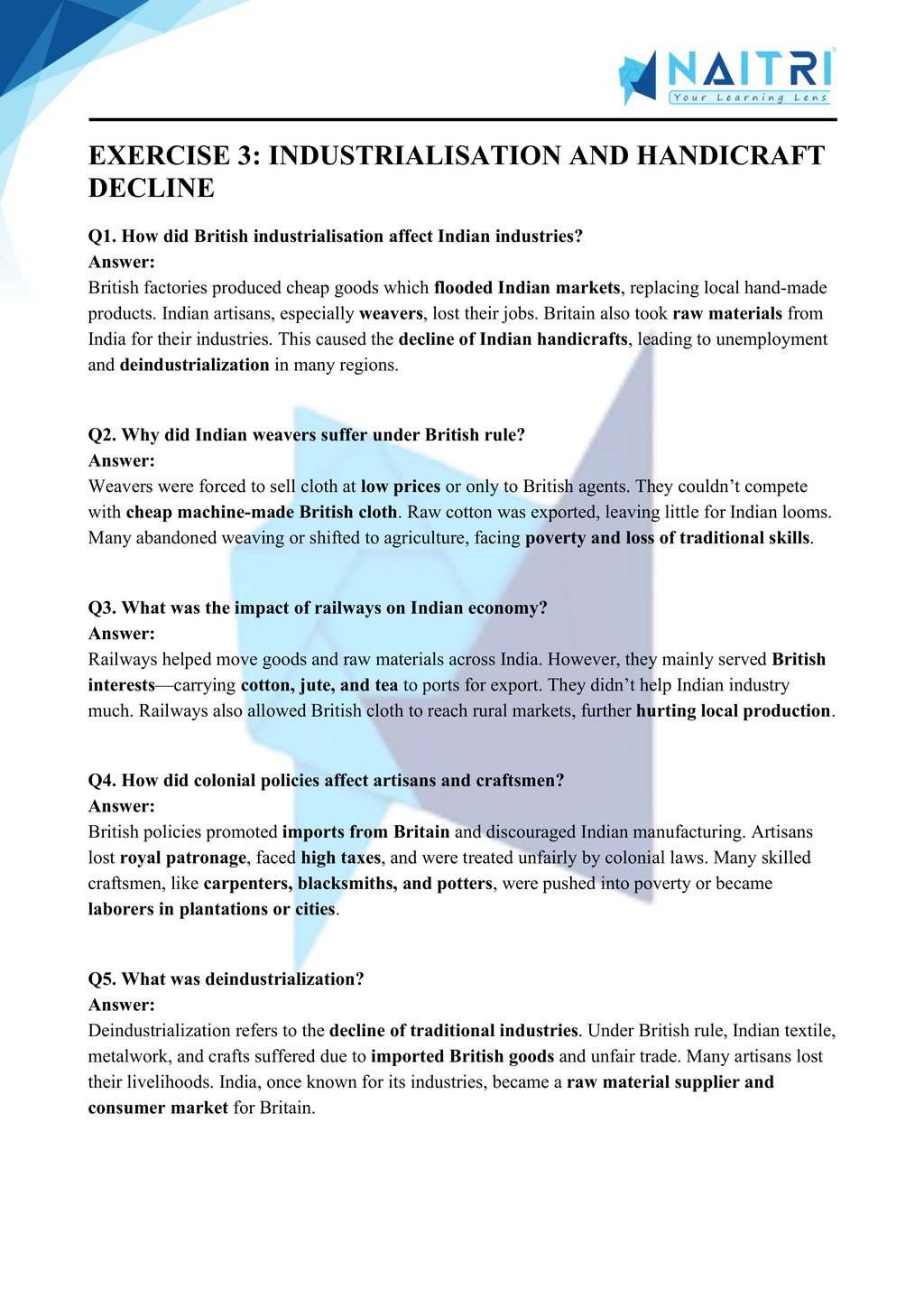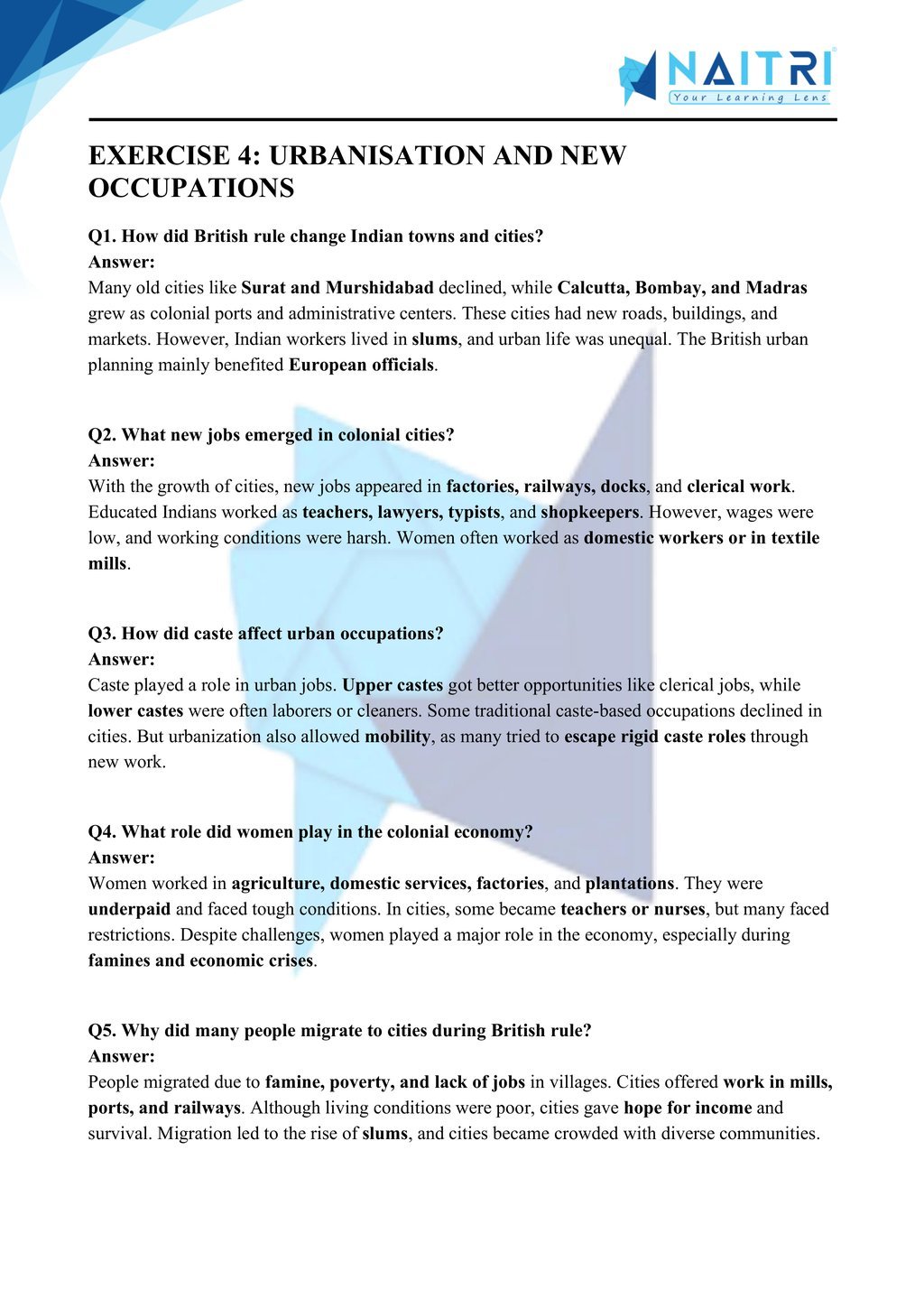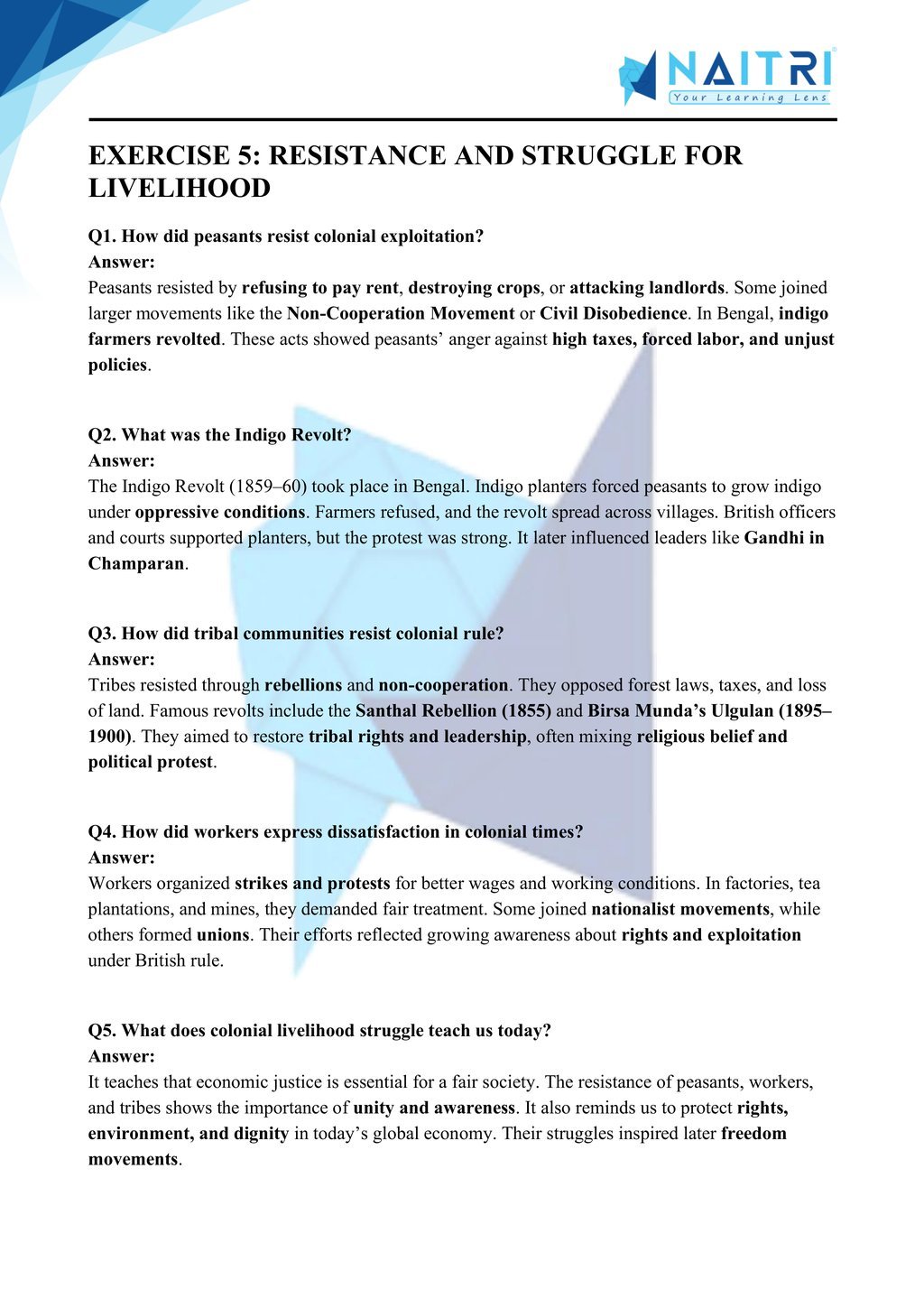MP Board Class 9 History Chapter 4 - Livelihoods, Economies and Societies
MP Board Solutions for Class 9 History Chapter 4 – Livelihoods, Economies and Societies are essential for understanding the impact of colonial policies on Indian forest communities in the MPBSE curriculum. These well-structured answers help students grasp topics like British forest laws, tribal revolts, and livelihood changes under colonial rule. Designed as per the latest syllabus, these solutions strengthen conceptual clarity and improve exam preparation. Ideal for revision and practice, they connect historical facts with socio-economic changes, making them a valuable study tool for scoring well in Class 9 Social Science exams.
MP Board Solutions For Class 9 History – Livelihoods , Economics and Societies – Exercise Images





Experience History Like Never Before – With AR!
Understanding Livelihoods, Economies and Societies is now more exciting and immersive! With the NAITRI App, you can explore complex history concepts through Augmented Reality (AR). Explore trade routes grow, communities evolve, and traditional systems shift — right in front of you. Our AR-powered lessons make learning interactive, 3D, and fun, helping you retain concepts better and enjoy every topic.



Visualize . Interact . Understand . The future of learning is here
Livelihoods, Economies and Societies – Important Questions with Answers
What was the impact of colonization on Indian peasants?
Answer: Colonization disrupted traditional agriculture, introduced high land taxes, and forced peasants into cash crop cultivation, often leading to indebtedness and famines.What are plantations and where were they introduced?
Answer: Plantations are large farms growing cash crops like tea, coffee, or rubber. The British introduced them in Assam, South India, and Bengal.How did commercialization of agriculture affect farmers?
Answer: Farmers were forced to grow cash crops instead of food grains, leading to dependence on markets, price fluctuations, and sometimes starvation during crop failures.What was the Ryotwari system?
Answer: In the Ryotwari system, revenue was collected directly from peasants (ryots), mainly in Madras and Bombay Presidency, often leading to heavy burdens.What was the Mahalwari system?
Answer: In the Mahalwari system, revenue was collected from village communities or mahal, especially in North India, under the supervision of Zamindars.What role did Zamindars play under British rule?
Answer: Zamindars collected taxes for the British but often exploited peasants, leading to resentment, displacement, and agrarian unrest in many regions.How did forest laws affect tribal communities?
Answer: British forest laws restricted access to grazing lands and forests, depriving tribals of livelihood, and forcing them into wage labor or rebellion.What were Indigo revolts?
Answer: Indigo revolts occurred when peasants were forced to grow indigo under oppressive contracts. Farmers protested against the planters’ cruelty in Bengal.What was the role of tribal groups in the economy?
Answer: Tribals engaged in shifting agriculture, hunting, and forest produce collection. British rule disrupted this, making them dependent on the moneylenders and wage labor.What is shifting cultivation?
Answer: Shifting cultivation involves clearing forests, burning them, and cultivating land temporarily. It was common among tribal communities but discouraged by the British.How did colonialism affect craftspeople?
Answer: Colonial policies destroyed local industries, imposed imported goods, and reduced artisans to laborers, causing poverty and loss of traditional livelihoods.Why were Indian textiles replaced by British ones?
Answer: British policies favored machine-made textiles, imposed tariffs on Indian goods, and led to a decline in handloom industries and weavers’ poverty.What was the impact of railways on Indian economy?
Answer: Railways promoted export of raw materials, expanded markets, and helped the British economy, but did little to support local industry or peasants.What were famine conditions during British rule?
Answer: Famines worsened under British policies due to export of food grains, forced cultivation, and neglect of welfare, causing millions of deaths.Who were Santhals and what was their resistance?
Answer: The Santhals, a tribal group, rose in revolt in 1855 against Zamindars and British officials due to land alienation and exploitation.What was the Permanent Settlement?
Answer: The Permanent Settlement (1793) fixed land revenue with Zamindars, who became landowners, often leading to peasant exploitation and non-payment issues.How did cash crops benefit the British?
Answer: Cash crops like cotton, indigo, and jute were exported to British factories, helping their industrial economy but harming Indian food security.What was the impact on nomadic communities?
Answer: Nomadic tribes were labeled criminals, their movements restricted, and many were forced to settle, affecting their independent lifestyle and livelihoods.What was the Champaran Satyagraha?
Answer: The Champaran Satyagraha (1917) led by Gandhi protested against forced indigo cultivation, leading to reforms and inspiring future mass movements.Why did tribal people rebel?
Answer: Tribals rebelled due to loss of land, forest rights, and exploitation, aiming to protect their identity, traditions, and resources.What was the role of moneylenders?
Answer: Moneylenders provided loans at high interest, trapping peasants in debt, often taking over land and causing widespread poverty.What changes came in irrigation and farming?
Answer: Irrigation expanded through canals, but mainly benefited commercial crops. Traditional methods declined as British policies focused on revenue, not sustainability.How were tribals taxed under colonialism?
Answer: Tribals were taxed for using forests, grazing cattle, or collecting firewood, severely disrupting their subsistence economy and increasing hardships.What are artisan guilds?
Answer: Artisan guilds were traditional craftsmen communities regulating quality, training, and pricing. They declined due to British industrial imports and economic control.How did industrialization in Britain affect India?
Answer: British industrialization led to imported goods flooding Indian markets, collapsing local industries, and transforming India into a raw material supplier and consumer market.
Livelihoods , Economics and Socities explores how colonial rule in India affected forest communities and ecosystems. The chapter discusses British forest policies, the introduction of commercial forestry, and the impact on tribal livelihoods. It highlights indigenous resistance and how colonial exploitation reshaped economic and ecological landscapes. This chapter provides insight into environmental history and the struggle of forest-dwelling communities.
Download Naitri App
Easy, Visual Learning — Right on Your Phone
Learn with Augmented Reality! The Naitri app makes CBSE and MP Board concepts interactive and fun — even in low-resource settings. Watch lessons, complete homework, take tests, and track progress — all in one place. Anytime. Anywhere.
Available on








